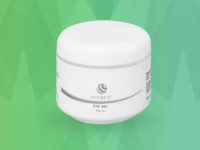Offers vary from free giveaways to buy one get one free, etc.
Click each product to view offer details
Showing all 5 results
NatureBee Introductory Pack – Give It A Go (Buy 2 x 60 caps get another 60 cap Free)
Rated 3.87 out of 5
47 reviews
NatureBee Power Pollen Partner Pack – 3 Month Supply for 2 people (400 caps)
Rated 5.00 out of 5
25 reviews
NatureBee Power Pollen Family Pack – 3 Month Supply for 3 people (600 caps)
Rated 4.85 out of 5
28 reviews
NatureBee Power Pollen Partner Pack + 60 Caps + 2 Pcs Honey Pollen Soap
Rated 4.00 out of 5
32 reviews
Manuka Honey Drops – Lemon & Honey (25 pk) Special Clearance: Expired Best-By Date – Discounted Price!
Rated 5.00 out of 5
11 reviews
 1800 147 009
1800 147 009 0800 506 601
0800 506 601 1-866-834-8355
1-866-834-8355










